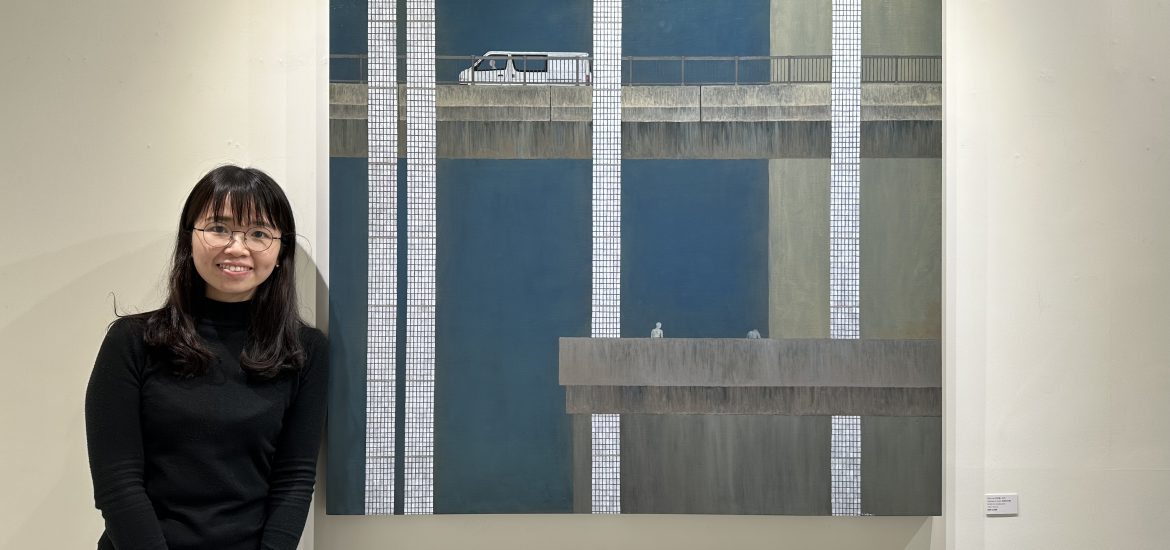Abby Lee is a bright-eyed and soft-spoken young professional who was one of the four recipients of the Art Next Artist Award (gold) at the Art Next Expo in 2021. Since 2016 she had been exhibiting variously at venues like Affordable Art Fair or at PMQ and the Goethe-Institut Hong Kong, but this first solo exhibit of hers – “Sequence” – was at an all-white, crisp interior at the stylish a|n gallery. Coincidentally, a|n gallery also opened in 2021, at the height of the pandemic and when many galleries in downtown Central were struggling to do business.
As Hong Kong not only leaves behind COVID but makes a renewed pitch to the world as a hub of culture and art as part of its tourism campaign and economic recovery, Abby seems to be among the younger cohort of contemporary artists that can tell the world and Hongkongers something unique and insightful about the life of this city.
In “Sequence” and her other exhibits, the main medium is acrylic and her foci are paintings and stop motion animation. Her scenes depict living and working environments where the individual is subsumed into differing perspectives of everyday scenes like roads, buildings, or structures. Systems and ways of doing things, and people’s routines are frequent topics. My own sense is that the ambience of her paintings is about process, “how things go” and work amidst the bustle and mundaneness of city life.
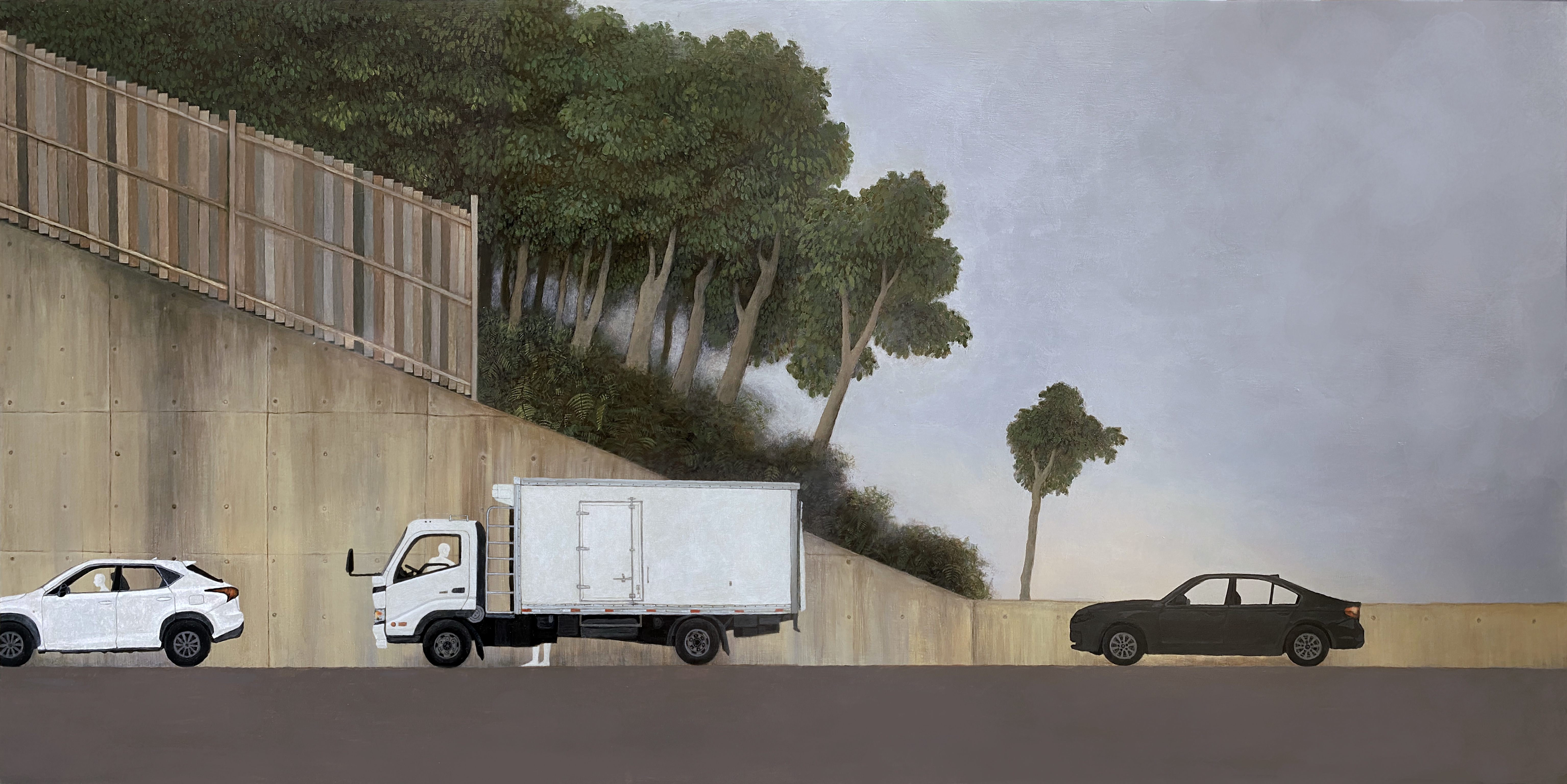
“Sequence” is appropriately named because the 14 acrylic paintings displayed are inspired by Figurism and Surrealism. As a|n gallery’s press release notes, “Lee uses low-saturation colours, coupled with a mixture of solid and broken lines to evoke a parallel universe that can be found in a science fiction. In these communal spaces tinged with mystic undertones, things are in absolute order – the railings are perfectly straight and tidy, and even the pedestrians on the bridge are walking in order, as if they are in a marching practice. The morphological sequences found in various visual motifs are a reflection of the repetitive daily life patterns of office workers.”
The exhibit also showcases her talents at stop motion animation with “Late Shadow”, which is an animation of one of her paintings (“Shadow on the Wall”). The fragmented, almost jarring presentation of the figure and the scenery express the passage of time in a loop that most city dwellers recognize as routine, which can be both comforting or frustrating depending on where one stands.
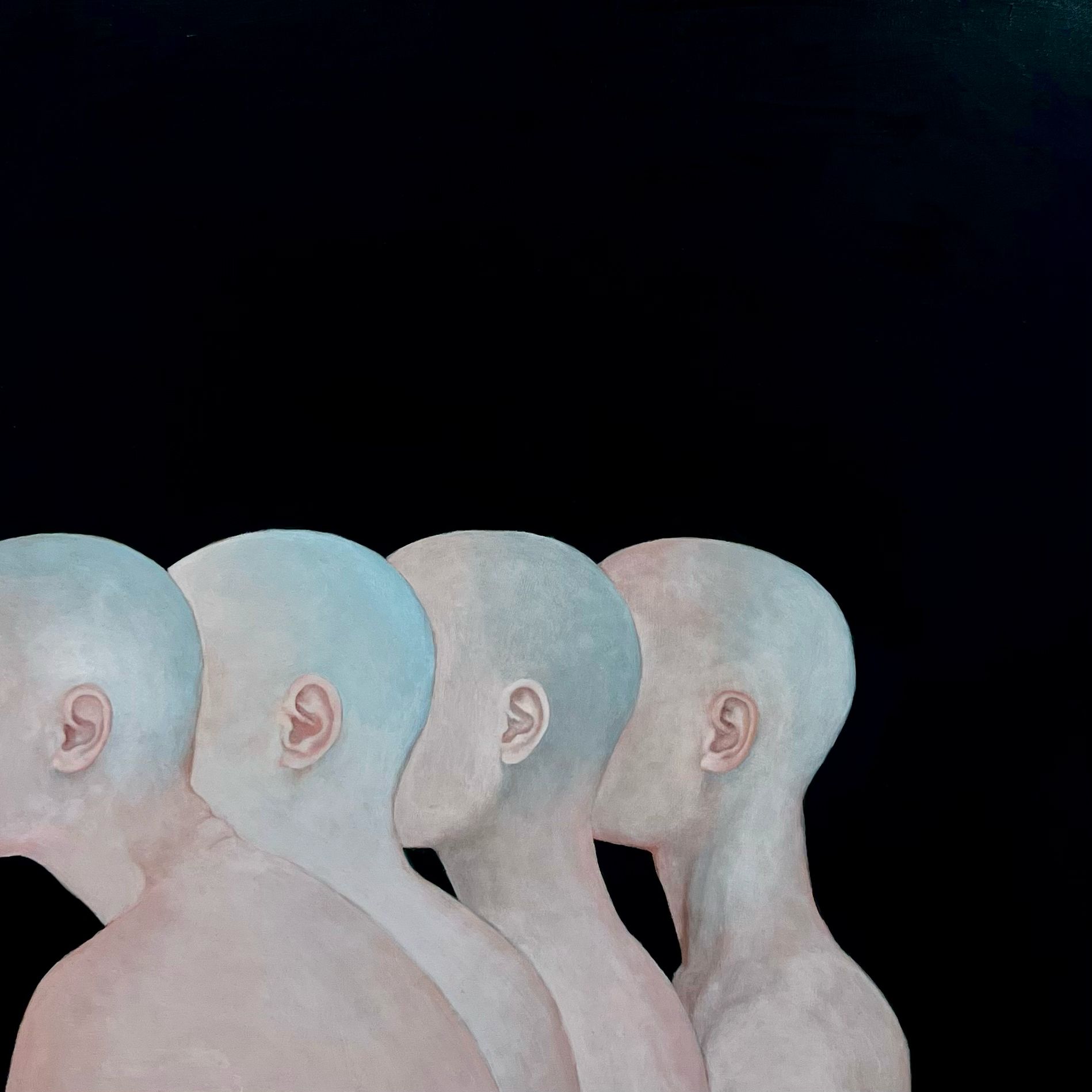
The way Abby draws people is striking for the very reason that they are intentionally faceless and anonymous. They wear no clothes and have no distinct human features except for their humanoid figures. Their existence amidst the context of blank surroundings apparently alludes to Zhuangzi’s Adjustment of Controversies, but perhaps their whiteness could allude to a suspended, still-embryonic, indeterminate identity – a cocoon of sorts, from which man does not emerge, but a butterfly. This is especially apparent in “Man Order,” which is one of her only paintings with close-ups of her human figures – and even then, only the ears are given shape and distinction.
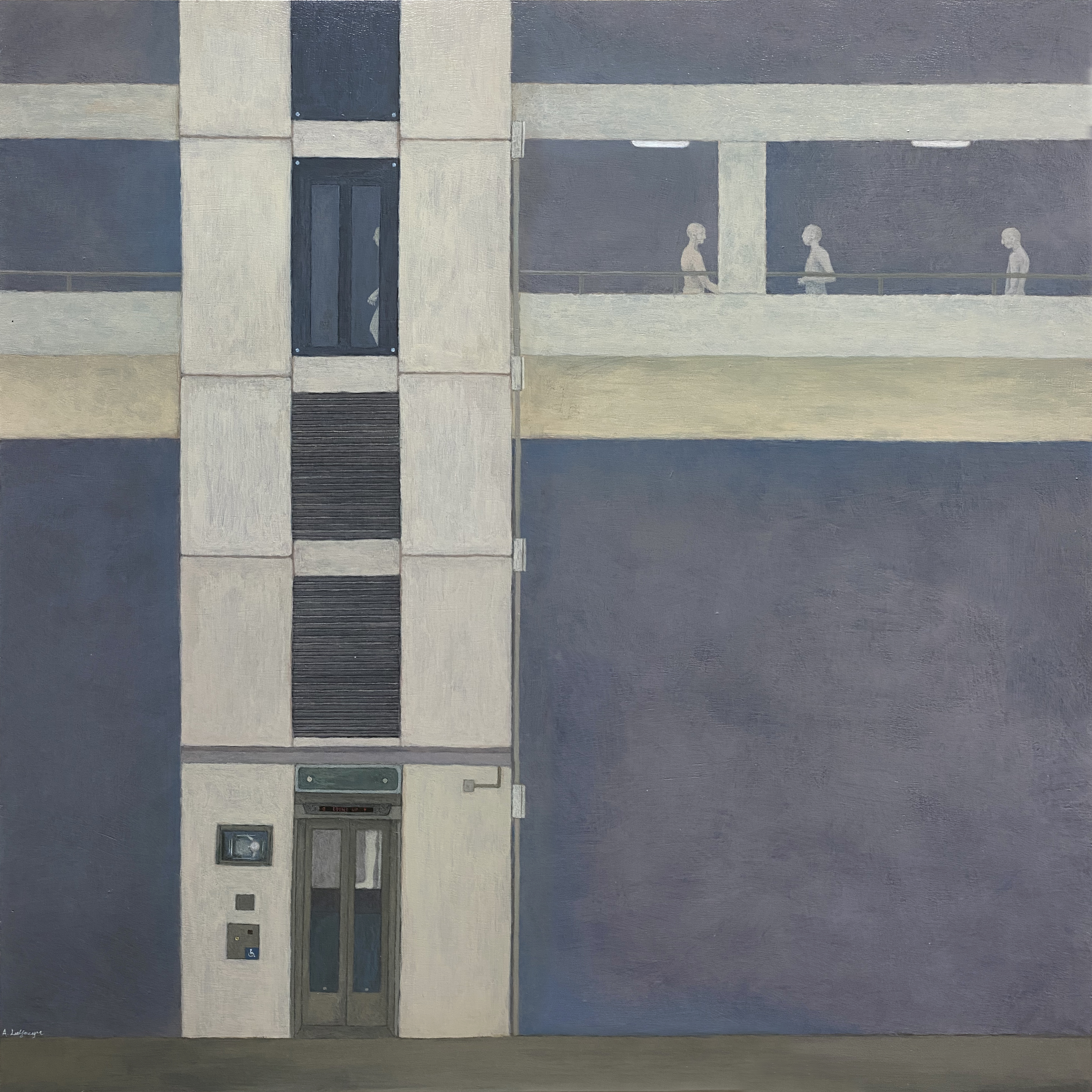
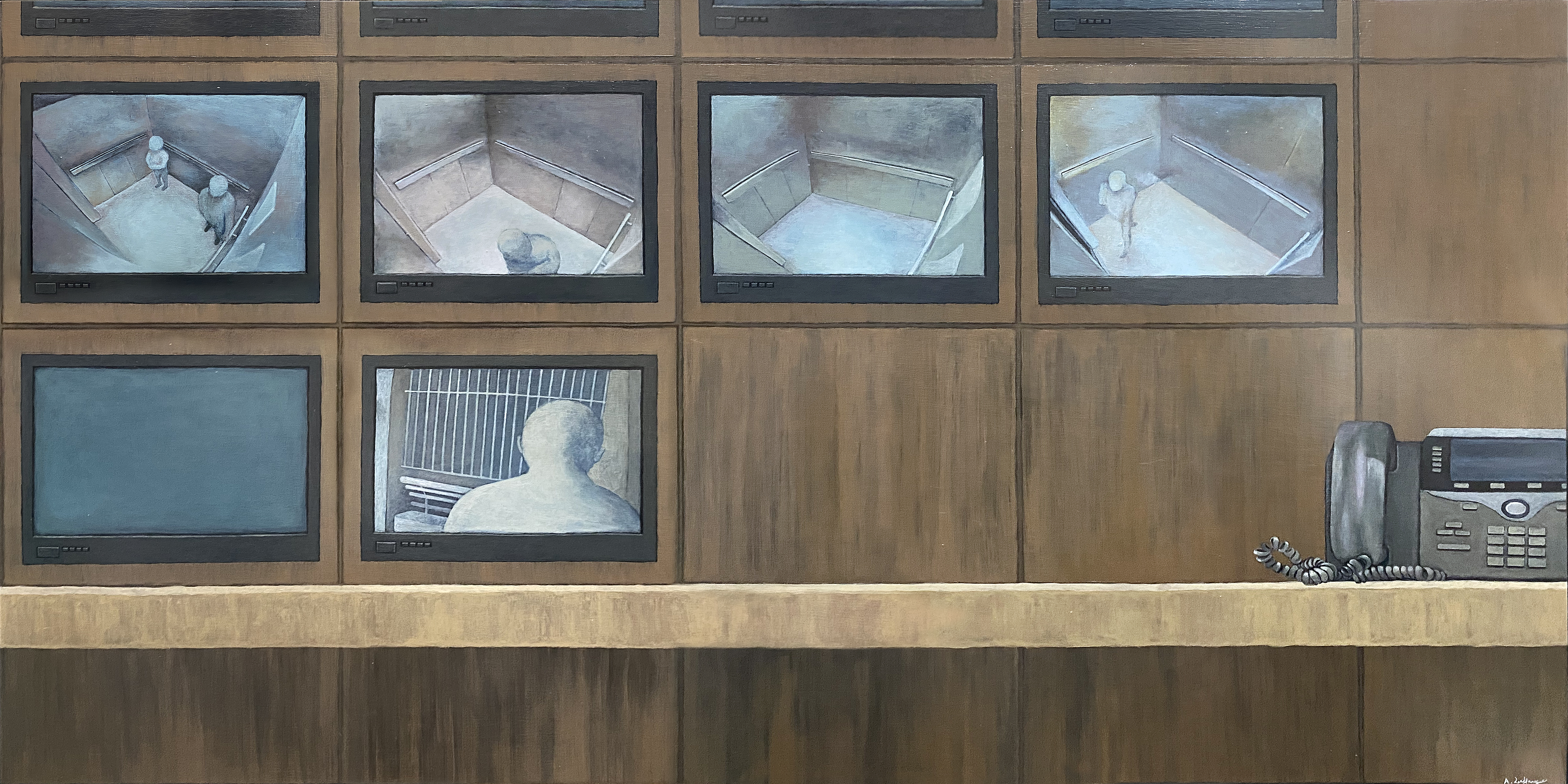
Abby’s dull, muted colors do not signal anything negative or unhappy. On the contrary, she has fond memories of living in the city. “I grew up in Fan Ling, which is a very rural area,” she tells me. “When I moved to more urban areas in the city, I was struck by how common places that we usually do not give second thought to could be looked at from different perspectives.”
The best examples of these are her marquee piece “Waiting to Enter the Tunnel,” which is a rare side perspective of a tunnel entrance. There are also two paintings, “Life and Highway” and “Several Spaces,” which are complementary observations of an elevator, a ubiquitous presence in Hongkongers’ daily lives. The CCTV cameras of “Several Spaces” provide a literal interior look into the faceless people inside the lift, and a metaphorical peer into the inner being of the artist and her subjects.

Rather than placing a particular value judgment, Abby’s art is a self-dialogue about her own childhood memories and internal ruminations on different perspectives about everyday life. “I am always in conversation with myself when making art,” she says.
At heart, Abby’s 14 paintings are a philosophical rumination on her experience of being a Hongkonger experiencing the city condition – this condition is both local and global, and feels universal while remaining intensely personal. I think this leads to greater questions about the self (or lack thereof). How does one’s self get subsumed, for better or for worse, into the city, and how one relates to and feels about growing up in urban surroundings, are questions raised and explored.
As a non-specialist, amateur observer of the cultural and art scene, I have always been immensely proud that some Hong Kong artists see the worth in a journalist of religion’s philistine perspective. But I am also an urban creature whenever I am in Hong Kong, so perhaps my personal resonance, combined with an amateur appreciation, has something to offer the artist – a naïve pair of beginner’s eyes that complements her rich work.
“Sequences” runs from 13 April to 10 May 2023
See more


